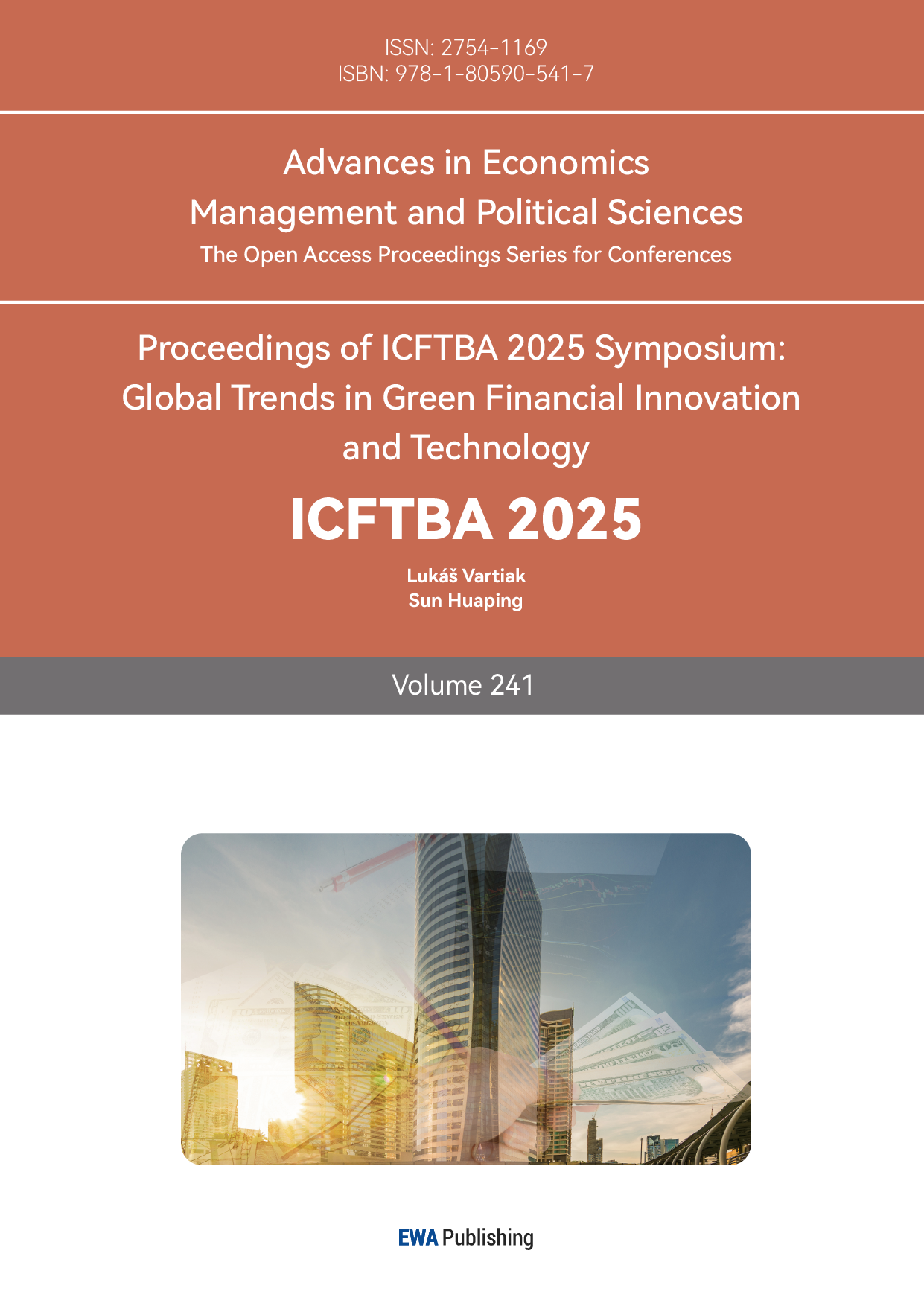References
[1]. Liang, Z. (2016). China’s great migration and the prospects of a more integrated society. Annual Review of Sociology, 42, 451–471. https: //doi.org/10.1146/annurev-soc-081715-074435
[2]. Niu, L., & Yang, Z. (2022). Impact of performance climate on overtime behaviors of new generation employees: The moderating effect of perceived employability and mediating role of job insecurity. Psychology Research and Behavior Management, 15, 3733–3749. https: //doi.org/10.2147/PRBM.S390051
[3]. Emmerich, A. I., & Rigotti, T. (2017). How personal resources influence work engagement and leadership behavior: The effects of job and personal resources on work engagement and the consequences for leadership behavior. Zeitschrift für Arbeits- und Organisationspsychologie A& O, 61(3), 133–148. https: //doi.org/10.1026/0932-4089/a000248
[4]. Liu, B., Chen, H., Yang, X., & Hou, C. (2019). Why work overtime? A systematic review on the evolutionary trend and influencing factors of work hours in China. Frontiers in Public Health, 7, 343. https: //doi.org/10.3389/fpubh.2019.00343
[5]. Sparks, K., Cooper, C. L., Fried, Y., & Shirom, A. (1997). The effects of hours of work on health: A meta-analytic review. Journal of Occupational and Organizational Psychology, 70(4), 391–408. https: //doi.org/10.1111/j.2044-8325.1997.tb00656.x
[6]. Cui, Y., Zhang, Y., & Liu, Y. (2023). Overwork-induced exploitation of Chinese adults: Social isolation, loneliness as mediating effects on mental health. Heliyon, 9(11), e22345. https: //doi.org/10.1016/j.heliyon.2023.e22345
[7]. Li, R., Liu, S., & Huang, C. (2023). Association between overtime and depressive symptoms among Chinese employees. Heliyon, 9(6), e17344. https: //doi.org/10.1016/j.heliyon.2023.e17344
[8]. Shen, J., Benson, J., Zhang, Y., & Zhu, L. (2025). The hidden cost of mandatory unpaid overtime: How and when mandatory unpaid overtime undermines subsequent motivation to work. Human Resource Management Journal, 35(2), 397–413. https: //doi.org/10.1111/1748-8583.12598
[9]. Bell, D. N. F., Hart, R. A., Hübler, O., & Schwerdt, W. (2000). Paid and unpaid overtime working in Germany and the UK (IZA Discussion Paper No. 133). Institute for the Study of Labor (IZA). https: //www.iza.org/publications/dp/133/paid-and-unpaid-overtime-working-in-germany-and-the-uk
[10]. Tan, J., Zhang, C., & Li, Z. (2023). Why do employees actively work overtime? The motivation of employees’ active overtime in China. Frontiers in Psychology, 14, 1120758. https: //doi.org/10.3389/fpsyg.2023.1120758
[11]. Wang, Y., Zhao, T., & Zhang, Y. (2025). The perception of labor control and employee overtime behavior in China: The mediating role of job autonomy and the moderating role of occupational value orientation. Sustainability, 17(5), 1956. https: //doi.org/10.3390/su17051956
[12]. Merriam-Webster. (n.d.). Supervision. In Merriam-Webster.com dictionary. Retrieved August 21, 2025, from https: //www.merriam-webster.com/dictionary/supervision
[13]. Benevene, P., Dal Corso, L., De Carlo, A., Falco, A., Carluccio, F., & Vecina, M. L. (2020). Positive supervisor behaviors and employee performance: The serial mediation of workplace spirituality and work engagement. Frontiers in Psychology, 11, 1834. https: //doi.org/10.3389/fpsyg.2020.01834
[14]. De Carlo, N. A., Dal Corso, L., Falco, A., Girardi, D., & Piccirelli, A. (2016). “To be, rather than to seem”: The impact of supervisor’s and personal responsibility on work engagement, job performance, and job satisfaction in a positive healthcare organization. TPM Testing, Psychometrics, Methodology in Applied Psychology, 23(4), 561–580. https: //doi.org/10.4473/TPM23.4.9
[15]. Mor Barak, M. E., Travis, D. J., Pyun, H., & Xie, B. (2009). The impact of supervision on worker outcomes: A meta-analysis. Social Service Review, 83(1), 3–32. https: //doi.org/10.1086/599028
[16]. Fosse, T. K., Skogstad, A., Einarsen, S., & Martinussen, M. (2019). Active and passive forms of destructive leadership in a military context: A systematic review and meta-analysis. European Journal of Work and Organizational Psychology, 28(5), 708–722. https: //doi.org/10.1080/1359432X.2019.1634550
[17]. Haque, A., Islam, M. S., & Chowdhury, S. P. (2023). The effects of abusive supervision on the behaviors of employees in an organization. Heliyon, 9(10), e20596. https: //doi.org/10.1016/j.heliyon.2023.e20596
[18]. Hobfoll, S. E., Halbesleben, J., Neveu, J.-P., & Westman, M. (2018). Conservation of resources in the organizational context: The reality of resources and their consequences. Annual Review of Organizational Psychology and Organizational Behavior, 5, 103–128. https: //doi.org/10.1146/annurev-orgpsych-032117-104640
[19]. Blau, P. M. (1965). Exchange and power in social life. Wiley.
[20]. Yu, J., & Leka, S. (2022). Where is the limit for overtime? Impacts of overtime on employees’ mental health and potential solutions: A qualitative study in China. Frontiers in Psychology, 13. https: //doi.org/10.3389/fpsyg.2022.976723
[21]. Chanty team. (2024). Working overtime: Pros, cons, and 20 statistics. Chanty Blog. https: //www.chanty.com/blog/working-overtime/
[22]. Kang, J. H., Matusik, J. G., & Barclay, L. A. (2017). Affective and normative motives to work overtime in Asian organizations: Four cultural orientations from Confucian ethics. Journal of Business Ethics, 140(1), 115–130. https: //doi.org/10.1007/s10551-015-2683-4
[23]. Yang, S., Chen, L., & Bi, X. (2023). Overtime work, job autonomy, and employees’ subjective well-being: Evidence from China. Frontiers in Public Health, 11. https: //doi.org/10.3389/fpubh.2023.1077177



